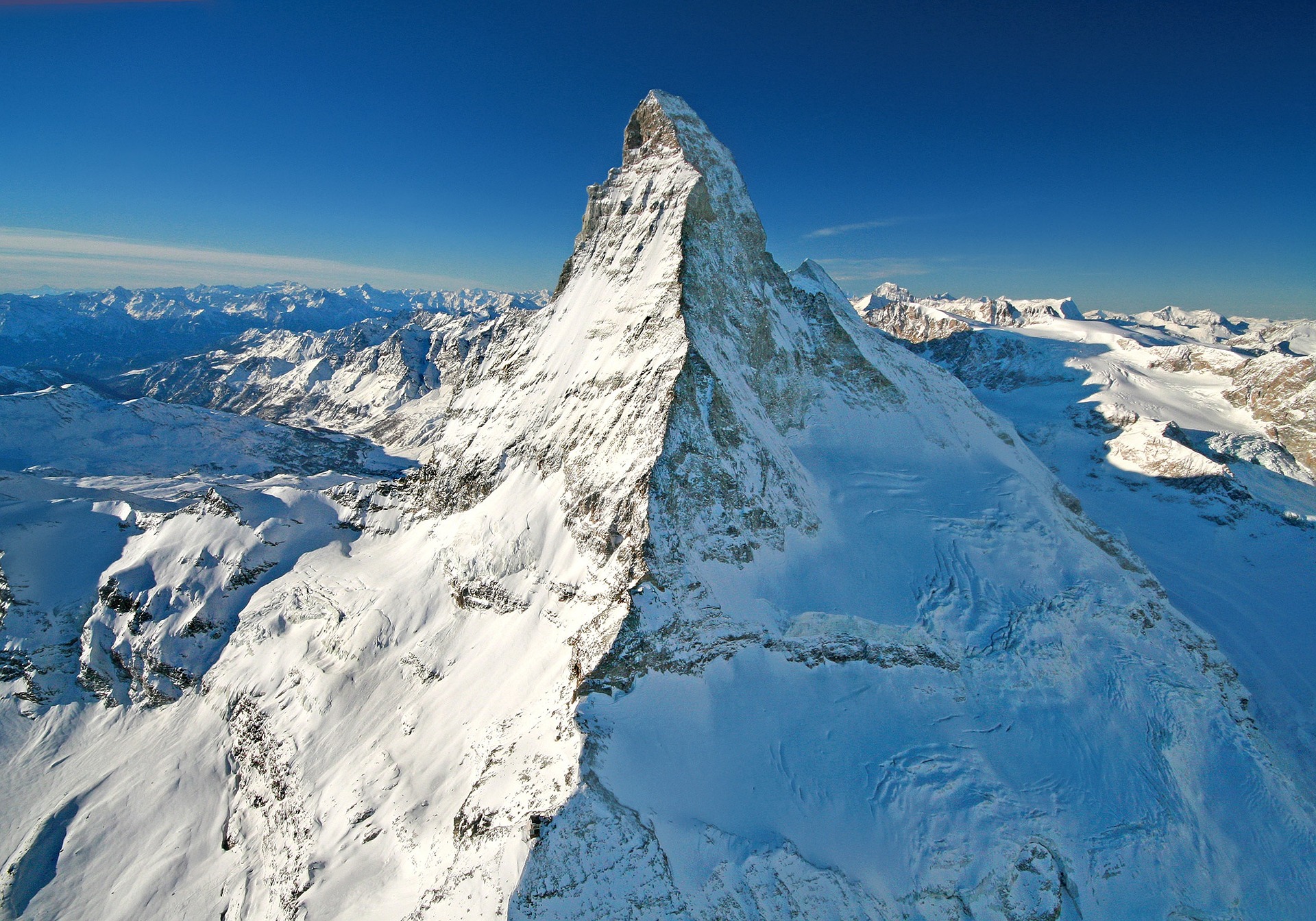Snowshoeing In The Swiss Alps - An Enchanting Winter Experience
Winter sports enthusiasts around the world often think of skiing and snowboarding when they picture the Swiss Alps. However, there is another activity that is gaining popularity in the region: snowshoeing. Snowshoeing in the Swiss Alps is an enchanting winter experience that offers a unique perspective on the beautiful landscapes and stunning mountain vistas.
Author:Jane RestureMar 25, 20233.5K Shares323.6K Views

Winter sports enthusiasts around the world often think of skiing and snowboarding when they picture the Swiss Alps. However, there is another activity that is gaining popularity in the region: snowshoeing.
Snowshoeing in the Swiss Alpsis an enchanting winter experience that offers a unique perspective on the beautiful landscapes and stunning mountain vistas.
Let's explore everything you need to know about snowshoeing in the Swiss Alps, including the best places to go, the equipment you'll need, and what to expect on your snowshoeing adventure.
What Is Snowshoeing?
Snowshoeing is a form of winter hiking that involves walking through snow-covered terrain with the help of specially designed footwear called snowshoes.
The shoes distribute your weight evenly, allowing you to walk on top of the snow instead of sinking into it. Snowshoeing is a low-impact, easy-to-learn activity that requires minimal equipment, making it accessible to people of all ages and fitness levels.

A Beginner’s Guide to Snowshoeing – Technique, First Steps & Gear
Why Snowshoeing In The Swiss Alps Is A Must-Try Experience
Switzerland is home to some of the most spectacular mountain scenery in the world. Snowshoeing allows you to experience this beauty up close and in a way that's not possible when skiing or snowboarding.
With snowshoeing, you have the freedom to explore the less-traveled paths and hidden valleys that are inaccessible to skiers and snowboarders. You'll also get to enjoy the silence and serenity of the snowy landscape, which is a far cry from the bustling slopes and noisy ski lifts.
8 Best Places To Snowshoe In The Swiss Alps
The Swiss Alps offer an abundance of excellent snowshoeing opportunities. Here are some of the best places to go:
1. Jungfrau Region
The Jungfrau region, located in the heart of the Swiss Alps, is a popular destination for skiers and snowboarders. However, it also offers some of the best snowshoeing trails in the country.
The region boasts a network of well-marked winter hiking paths that wind through picturesque valleys and snow-covered forests.
2. Engadin Valley
The Engadin Valley, located in southeastern Switzerland, is home to some of the most stunning mountain scenery in the country.
The valley is surrounded by towering peaks and glaciers and offers a range of snowshoeing trails for all levels of ability. The trail that leads to the Morteratsch Glacier is particularly breathtaking.
3. Aletsch Glacier
The Aletsch Glacier, located in the Bernese Alps, is the largest glacier in the Alps and a UNESCO World Heritage Site. Snowshoeing on the glacier is a unique and unforgettable experience that offers unparalleled views of the surrounding peaks and valleys.
4. Zermatt
Zermatt is a picturesque town located at the foot of the Matterhorn, one of the most iconic peaks in the Swiss Alps. The town offers a range of snowshoeing trails that wind through snow-covered forests and along frozen rivers.
5. Grindelwald
Grindelwald, a scenic town located in the Bernese Alps, is known for its stunning views of the Eiger and Wetterhorn peaks. The town offers a range of snowshoeing trails, including the popular Bussalp trail, which offers breathtaking views of the surrounding mountains and valleys.
6. Saas-Fee
Saas-Fee, a charming village located in the Valais region of the Swiss Alps, is surrounded by some of the highest peaks in the country. The village offers a range of snowshoeing trails that wind through snow-covered forests and past frozen waterfalls, including the picturesque Panorama trail.
7. Davos Klosters
Davos Klosters, a popular ski resort located in eastern Switzerland, also offers excellent snowshoeing opportunities. The resort boasts a range of well-marked winter hiking trails, including the panoramic Flüela trail, which offers stunning views of the surrounding mountains and valleys.
8. Gstaad
Gstaad, a picturesque town located in the Bernese Alps, offers a range of snowshoeing trails that wind through snow-covered forests and along frozen lakes. The Hornberg trail, which leads to the top of Hornberg mountain, offers spectacular views of the surrounding peaks and valleys.
With these additional destinations, you can explore even more of the breathtaking beauty that the Swiss Alps have to offer.
Video unavailable
This video is unavailable: Original link to video
What You Need To Know Before You Go Snowshoeing
Before you head out on your snowshoeing adventure, there are a few things you should know:
1. Dress Appropriately
Dressing appropriately is key to enjoying your snowshoeing adventure. You'll want to dress in layers, with a moisture-wicking base layer, an insulating mid-layer, and a waterproof outer layer. Be sure to wear warm, waterproof boots and bring a hat, gloves, and sunglasses.
2. Use The Right Equipment
Snowshoeing requires minimal equipment, but it's important to use the right gear to ensure a safe and enjoyable experience.
You'll need snowshoes, trekking poles, and gaiters to keep snow from getting inside your boots. It's also a good idea to bring a backpack with snacks, water, and extra clothing.
3. Choose The Right Trail
Make sure to choose a trail that matches your ability level and experience. Some trails are more challenging than others and require a higher level of fitness. If you're new to snowshoeing, it's a good idea to start with an easier trail and work your way up to more challenging routes.
4. Check The Weather
Be sure to check the weather forecast before you head out on your snowshoeing adventure. Snowshoeing in the Swiss Alps can be dangerous in inclement weather, so it's important to be prepared and plan accordingly.
5. Respect The Environment
Snowshoeing in the Swiss Alps offers a unique opportunity to experience the beauty of nature in the winter. However, it's important to respect the environment and leave no trace behind. Be sure to stay on designated trails and pack out all trash and litter.
6. Consider Hiring A Guide
If you're new to snowshoeing or unfamiliar with the area, it may be a good idea to hire a guide. A guide can help you navigate the trails safely and show you the best routes for your ability level.
They can also provide valuable insight into the local flora and fauna, as well as the history and culture of the area.
People Also Ask
Is Snowshoeing Difficult?
Snowshoeing is a relatively easy activity that requires minimal equipment and can be learned quickly. However, the difficulty level can vary depending on the trail you choose and your level of fitness.
Can You Snowshoe Without A Guide?
Yes, you can snowshoe without a guide. However, it's important to choose a trail that matches your ability level and experience and to check the weather forecast before you head out.
How Long Does A Snowshoeing Trip Usually Last?
The length of a snowshoeing trip can vary depending on the trail and your level of fitness. A typical snowshoeing trip can last anywhere from a few hours to a full day.
Do You Need Special Shoes For Snowshoeing?
Yes, you will need special shoes called snowshoes for snowshoeing. Snowshoes are designed to distribute your weight evenly and allow you to walk on top of the snow instead of sinking into it.
Can You Snowshoe In The Swiss Alps If You've Never Done It Before?
Yes, you can snowshoe in the Swiss Alps even if you've never done it before. However, it's important to choose an easier trail that matches your ability level and experience and to check the weather forecast before you head out.
Conclusion
Snowshoeing in the Swiss Alps is an enchanting winter experience that offers a unique perspective on the beautiful landscapes and stunning mountain vistas. With its easy-to-learn, low-impact nature and minimal equipment requirements, snowshoeing is accessible to people of all ages and fitness levels.
Whether you're an experienced hiker or a beginner looking for a new winter adventure, snowshoeing in the Swiss Alps is a must-try experience that you won't soon forget.

Jane Resture
Author
Since she embarked on her first world trip in 2002, Jane Resture spent the past decades sharing her personal journey and travel tips with people around the world. She has traveled to over 80 countries and territories, where she experienced other cultures, wildlife she had only read about in books, new foods, new people, and new amazing experiences.
Jane believes that travel is for everyone and it helps us learn about ourselves and the world around us. Her goal is to help more people from more backgrounds experience the joy of exploration because she trusts that travel opens the door to the greatest, most unforgettable experiences life can offer and this builds a kinder, more inclusive, more open-minded world.
Latest Articles
Popular Articles